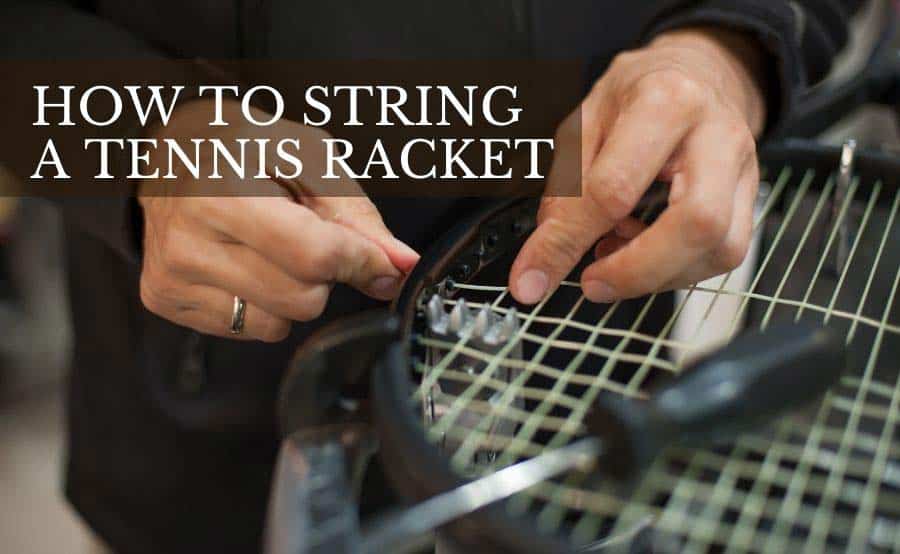Go Big or Go Home: An In-Depth GoPro Comparison
 Originally designed for surfers and thrill seekers, the GoPro cameras are now a big favorite of many cinematographers and armature photographers alike. They’re a tiny camera that pack in a ton of features. We’ll take a look at the history of the GoPro cameras over the years and the features of each, different mounts and accessories and more so you can get to filming high-quality footage in no time.
Originally designed for surfers and thrill seekers, the GoPro cameras are now a big favorite of many cinematographers and armature photographers alike. They’re a tiny camera that pack in a ton of features. We’ll take a look at the history of the GoPro cameras over the years and the features of each, different mounts and accessories and more so you can get to filming high-quality footage in no time.
Article Overview
GoPro Models Compared: GoPro Camera Comparison Chart
We’ve put together a comprehensive GoPro comparison chart where you can compare GoPro models side-by-side and gives you price, specs, ports, storage, availability and more (even waterproof depth). We recommend you open it side-by-side with this article (the link will open in a new window) to compare as you learn in-depth details for your favorite GoPro model below.
One of the most popular cameras used in the extreme sports is The GoPro Hero series. Described by GoPro Founder & Inventor Nick Woodman “it’s the almost invisible, wearable camera you forget you’ve got on.” This is one of the main reasons why the GoPro has become the camera of choice because of its light weight, small compact size is extremely simple to use. With all the available camera mount options, you are able to attach it to almost anything and at any angle. This allows for some amazing and stunning ‘Point of View’ shots often impossible to film with bigger cameras.
Before we get into each of the GoPro camera reviews, let’s take a look at the history of the camera and evolution of the different models over the years.
GoPro History
Launched in 2006, the first GoPro camera was called the Digital Hero, shooting VGA video in 10 second bursts with no audio recording. The original idea was for the camera to be used by Surfers.
- 2007 – A major upgrade to image quality and usability, called the Digital HERO 3 because it came with a 3 megapixel camera and 512×384 video.
- 2008 – GoPro launched the Digital HERO 5, a camera designed with a bigger 5 megapixel sensor, and supported the standard 512×384 video capture. This camera was also the first GoPro to use a 170° angle of view, ultra-wide lens.
- 2009 – The launch of the first HD HERO which captures professional quality 1080p / 960p / 720p true HD video at 30 and 60 frames per second. The camera included the industry’s widest 170° angle lens and also shoots a lesser 127° wide angle in the 1080p resolution. The camera has the same 5 megapixel sensor and features an optional auto-photo mode that captures photos every 2, 5, 10, 30, or 60 second intervals.
- 2010 – Another jump to high-definition was the Hero HD supporting1080p video at 127° wide-angle.
- 2011 – GoPro refreshed their product line in October with the GoPro Hero2, an improved version with an 11-megapixel camera, better low-light capability and 1080p video at 30 frames per second.
- 2014 – The launch of GoPro 4 in silver and black (to replace GoPro 3+).
- 2015 – In June they released: GoPro HERO+LCD with recording at 1080p at 60 fps/and 8 megapixel photos and touch screen. Then in October GoPro released its third entry level camera: GoPro HERO+.
- 2106 – Hero5 Black and Hero5 Session were introduced in September, both are waterproof up to 10 m, support 4k video recording up to 30 fps.
- 2017 – In September the Hero6 Black was released which has the same features as the Hero5 but increased video (4k60 vs 4k30), advanced video stabilization and the first camera to have its own CP1 chip.
GoPro Hero Review & GoPro Comparison
We have individual GoPro reviews for the latest cameras below so you can get the full GoPro comparison. Because the cameras are built so well, the newer models might not necessarily be the best ones. They are all solid choices, just a matter of finding which is the best fit for you. For that reason, we listed them in chronological order so you can see the evolution of the models over the years.
GoPro Hero3

GoPro HERO3: White Edition
Has the same performance specs as the Original HD HERO camera it replaces, and is able to capture 1080p 30 fps and 720p 60 fps video plus 5MP photos at a rate of 3 photos per second.
Price: $269.99
GoPro HERO3: Silver Edition
The Hero 3 Silver Edition has the same high-performance specs as the HD HERO2 camera it replaces, and is capable of capturing ultra-wide 1080p 30 fps and 720p 60 fps video plus 11MP photos at a rate of 10 photos per second.
Price: $249.99
Video: GoPro Hero 3
Check out the amazing quality of the GoPro Hero 3 in this epic underwater video.
GoPro Hero3+

GoPro HERO3+: Silver Edition
It has the following improvements to that of the HERO3 camera it replaces, Video frame rates are doubled to 1080p 60 fps and 720p 120 fps video. Other change is the reduction to 10MP photos. and there is no Protune.
Price: $299.99
GoPro HERO 3+: Black Edition
Capable of capturing ultra-wide 4k 15fps, 2.7k 30fps 1440p 48fps, 1080p 60 fps and 720p 120 fps video and 12MP photos at a rate of 30 photos per second. Included with the camera is a Wi-Fi Remote Improvements include a 4x faster Wi-Fi, improved image quality with a new lens and powerful new features geared for versatility and convenience. “SuperView” which is a new video mode that captures the world’s most immersive wide-angle perspective. Auto Low Light mode intelligently adjusts frame rate.
Video: GoPro Hero3+
Check out the GoPro Hero 3+ in action in an African Safari to see how it compares to the GoPro Hero 3.

GoPro Hero4 Silver
This model is the only one that has a new touch screen control on the back. Hero4 Silver shoots 1080p video up to 60fps and 720p video up to 120fps. It can shoot 4K video at 15fps. Photos are 12 megapixels with 30fps burst mode. Battery life is not specified, but it is said to be similar to the Hero3 silver and black.
Price: $299.99
GoPro Hero4 Black
The most advanced model offered by GoPro. Although it has no touch screen, it is a step up from the Hero4 Silver. With 4K video at 30fps and 1080p video at 120fps, this camera is great for slow motion. This model is targeted to professionals who want to improve their cinematography drastically. With a price point of $500, this is the most expensive GoPro.
GoPro Hero4 Session

GoPro HERO+ also adds wifi connectivity for quick mobile sharing. This is a good entry level camera.
GoPro Hero5 Black
The Hero5 Black takes the design up a notch. From the previous clunky and plastic hard outer shell design, the Hero5 has a a sleek black waterproof shell. Another new and improved feature is the full-color, touch display on the back of the camera. It also gives you the ability to easily transfer footage to your phone via QuikStories, voice control and more.
Price: $299.00
GoPro Hero6 Black
Similar to the Hero5, the Hero6 comes with all the advanced featured and improved design in addition to increased video up to 2.7K120. The other main difference is the Hero6 is the first GoPro camera to have its own GP1 chip similar to a computer which is designed to deliver advanced stabilization and quality. Otherwise the cameras are nearly identical. So if video is important to you, you might consider an upgrade to this newer version.
Price: $340.00
GoPro Hero7 (Black, Silver Or White)
Similar to the Hero6, the newest camera the Hero7 has advanced stabilization and quality. The main new feature is it is voice-controlled so you can stay hands-free while you tell the camera to start recording or take a photo. In addition, the black model allows you to live stream to Facebook Live and has Time Warm, which is a super stabilized time-lapse video. HERO7 Black and the two similar models (white and silver) are a little more pricey than the older models, but they keep upping the ante with the improved quality and capabilities.
GoPro Fusion
The latest and greatest camera in the GoPro family is the fusion. The Fusion has a 4-mic proccessing for advanced wind noise reduction and 360 audio. In addition to improved audio quality, the video is the most high-definition yet with 5.2K30. It also includes Spherical Capture and OverCapture as well as some of the more advanced features you’d come to expect with the higher-end go pros, but lacks some bigger features like touch display, QuikStories, auto upload and HDMI output. So you’re compromising some things to get others. It does come with a hefty price tag so you better be serious about stepping up your GoPro game to invest in the best.
Tips For Using The GoPro Hero Camera
The GoPro camera controls are extremely simple to use, even for non-technical people. There are just 2 main buttons on the top and front of the camera, The top button is the shutter release and start/stop button as found on almost all other cameras. In menu mode, this then becomes the Option select button. The front button is power On/Off and mode select. The third button on the side of the camera is for the Wi-Fi enable option.
The main functions selected via the menu are Video, Photo, Burst, Time Lapse, Settings & Play when you have the LCD Bac-Pac or are connected to a HDMI TV.
Once familiar with the menu sequence, the required mode can be selected without looking. Actual camera settings are much more tricky as there are way too many options to remember all the button presses. This is made easier if you use the WI-Fi and the Free GoPro Android or iPhone App to access all the camera settings, this also allows the smartphone to be used as a viewfinder.
Battery Life And Charging
If using a single battery as you would when you first get the camera, we recommend fully charging the battery before every film session or you may experience the frustration of the auto switch-off when the battery goes dead during filming. From a full charge you should expect around 1 hour & 30 mins of continuous video at 720 HD 50fps. Expect a little less filming time if you also have Wi-Fi enabled.
Using the GoPro as a normal point and shoot camera, there will be plenty of battery life with the camera left switched on in standby mode, even during a 4-hour hike. To guarantee you have enough battery life, you will need a spare battery especially on long Hike and Fly sessions. Use one battery for the hike – photos and short video clips to the launch point, the second battery to capture the flight. The same goes for the Memory cards, Recharging via a PC’s USB port takes around 2 hours for a full recharge.
Memory Cards
The GoPro Hero3 does not come with a memory card installed. You will need to buy one (or more) to suit your required needs before you can use the camera. The Hero3 uses micro HCSD cards which can be any size up to 64Gb. Earlier GoPro models used the Standard full-sized HCSD cards.
For best performance when recording in Protune video mode and for 0.5 seconds time-lapse photography you need to use a Class10 card or higher. Class 10 cards are designed for fast data transfer/storage which is what is needed for shooting HD video.
Slower cards can’t handle the huge amounts of image data quickly enough resulting in corrupt or damaged files due to missing data. 16, 32 or 64Gb are the best size options for HD Video as 8Gb or smaller may fill up too quickly.
- 2 hours and 20 minutes of video at 720 HD 50fps (with Protune)
- 4 hours and 45 minutes at normal 720 HD 50fps (without Protune)
- Take just over 5,000 photos at the 11 Mpx setting. Using the lower 5 Mpx setting, you can record over 9,999 images.
GoPro Features
Video
The camera captures professional quality video at 1080p-30, 720p-60, 960p-48 and WVGA-120 resolutions and frame rates. The Black version adds 1440P-48 and the ultra-high resolutions 2.7KP-30 fps and 4KP-15 fps (Protune only) video modes and higher frame rates to the lower resolutions. There are no focus or complicated exposure settings.
Advance users can adjust the white color balance. With no zoom lens, the GoPro is not a camera for general video – you need to be close to the subject or be part of the action you are filming meaning POV (Point of View) or else the subject can be just a tiny speck in the middle of the frame. Using the GoPro takes many hours of experimenting, trial & error and sometimes just luck to get usable non-POV footage as seen in the demo videos above.
Protune is an option more for the advanced or professional user who requires more dynamic image manipulation, color balance and color correction so that GoPro footage and images can be better matched to other video footage from different cameras. Protune also gives more details in both shadows and highlights which can be edited to create much sharper images.
Photo
With a 32 GB card you are able to shoot over 5000 11Mpx images or 9999 images at 5Mpx. When taking single shot images there is a long delay (just under 2 seconds) waiting for the shutter to release. This makes it easy to miss the action shot you wanted to capture. The delay is added due to the extra force required to press the shutter release on the waterproof housing.
The amount of time is enough to allow the camera to stabilize to remove any camera shake. Also it’s very easy to get your fingers in the shot when holding the camera due to the wide-angle lens and the camera’s small size. There are no adjustments for focus, zoom, exposure and settings that are commonly found on other cameras.
Even with lack of adjustments, the GoPro will take some amazing photos if you take the time to experiment and find out what works best for you. It’s not a camera for everyday general photography.
When taking photos, the distance from the camera makes a big difference. As you can see in an experiment below, the closer to the camera the better. When shooting close-up action shots, the subject should be positioned within 5 meters of the lens.
Images below range from a distance of 30m, 20m, 10m, 5m, 3m, 2m and 1m with the camera positioned at ground level.
On the Hero Black there is also Continuous Shot Mode that allows you to capture any number of single images while you have your finger pressed on the shutter release and while recording video the ability to take photos in time-lapse mode or single shots manually.
Burst
Uses the same storage space as the Photo option. The number of images per second allows up to 30 shots on the Hero3 Black, 10 on the Silver and 3 for the White. This feature may allow for better single-shot action capture if the standard single shot photo delay is too long. This allows the user to preempt the action and record multiple images as it happens. There is a noticeable delay after the photos have been taken while the camera then saves them to the memory card, even with a Class 10 card installed.
Time Lapse
The time-lapse feature allows you to record photo sequences from 0.5 to 60 second intervals, and later convert them into a video or delete any of the photos not required.
Using basic math can help calculate the required time-lapse settings:
- 60 seconds = 1/minute = 60/hour @ 24fps gives 2.5 seconds of video
- 30 seconds = 2/minute = 120/hour @ 24fps gives 5 seconds of video
- 10 seconds = 6/minute = 360/hour @ 24fps gives 15 seconds of video
- 5 seconds = 12/minute = 720/hour @ 24fps gives 30 seconds of video
- 2 seconds = 30/minute = 1800/hour @ 24fps gives 1 minute and 15 seconds of video
- 1 seconds = 60/minute = 3600/hour @ 24fps gives 2 minutes and 30 seconds of video
- 0.5 seconds = 120/minute = 7200/hour @ 24fps gives 5 minutes of video
Setup
The setup gives you access to all the camera settings and setup options. These details are too complex to include here but you can visit the GoPro website to download the User Manual for the camera you are interested in for more details.
GoPro Attachments & Mounts
The ‘supplied with’ mounts are enough to get started, but you will need more, especially the flat adhesive mounts. These are used with the supplied Quick Release or J-Hook Buckle which attach to the Camera housing. You get one flat mount and one curved mount.
Fetch – Dog Harness
You can put your Go Pro on this specific dog harness to get a really cool view of what your dog sees. This mount costs $59.99 and has two locations you can place the Go Pro. Your dog can play in the dirt, mud or water with this harness so you can get all the shots of your dog chewing, jumping and playing. This harness can fit different size dogs from 15-120 pounds.
Curved Mount & Flat Mount
The curved mount is normally used to attach the GoPro to your helmet. The flat mount you could stick on your ski’s for speed-flying. The best position is normally near the ski tip which allows the camera to point forward or looking back towards the pilot. The less popular ski mounting position is near the tail of the ski.
Other mounts often used are helmet extension arms which position the camera to show the pilots face and upper body.
One idea for a camera mount is to modify the optional head strap mount by using just the short length of elastic to wrap around your ski boot or leg. More advanced camera mounts include:
- Chase-Cam’s which attach to the gliders ‘D’ line attachment points.
- Scorpion Mount which positions the camera so that it looks down on the pilot from behind.
- Wing mounts which attach the camera to the glider canopy which looks down on the pilot.
When working out suitable mounting positions, it’s best to experiment first by using double-sided sticky tape and record short lengths of video before attaching the mount properly. With skis you may get too much of the ski tip in your shot if positioned too far back from the front of the ski. The curved helmet mount may also be tricky depending on the type of helmet you are using.
An example can be seen above on the Plusmax helmet where the mount will only attach on the side. The other curves on the top and front of the Plusmax helmet are too much for the curved mount to fix securely.
GoPro Cons
There are a few minor frustrations, which you quickly get used to and are soon forgotten.
- No Memory Card With Camera – There is no Memory Card supplied as standard. This is not always clearly indicated when buying the camera, so it can be annoying if you need to then order a card and have to wait a few extra days before you can try out your new camera.
- No UNC Camera Mount Included – There is no standard 1/4×20 UNC camera mount included and due to the GoPro’s small compact size and waterproof housing it is impossible to fit one into the camera body. GoPro makes a Tripod Mount to attached to a standard 1/4×20 tripod stud, but I feel it should be a standard addition to the ‘supplied with’ mounts so that the camera can connect to any standard tripod camera fixtures and fittings.
- Limited Mounts Out of the Box – The Hero3 comes with a limited number of mounts, but there are many more options available from GoPro and third-party suppliers. Depending on the type of filming you plan to do, you will likely need to buy more. The problem is this can get very, very expensive. Buying all the mounts available could cost you more than you paid for the camera. But once you have collected a few of the mounts and extension arms, you can mix, match and modify the individual components to create your own. Further, if you have the skills, tools and materials, you can design and create something custom to best meet your needs.
- Limited Battery Life – One other frustration is battery life. The battery size and its capacity is limited due to limited available space in the camera. GoPro resized the Hero3 so it now has a dedicated battery. Standard AA or AAA batteries are too big and will not fit the smaller camera.
Tips For Low Battery Life
To get around the battery life issue, you have a few options:
- Recharge before every video/photo session, which takes about 2 hours if the battery is dead.
- Buy one or more spare batteries and a charger.
- Use a portable USB charger/Power supply.
- Use the GoPro Battery BacPac which should roughly double your original battery life.
- Plan what you want to shoot in advance and only shoot what is needed.
Will You GoPro?
If you are looking for a high quality small and compact POV HD video, a GoPro Hero should be your first choice. It’s a small investment but if you are traveling or someone who enjoys adventure (and documenting it) this camera will bring you so much enjoyment.
Looking for a more traditional camera? You might consider a DSLR camera which captures high-quality photos for amateur and professionals alike. Then why not take all those beautiful memories sitting on your device into a photo book that you can show off to friends and family?
Have you used a GoPro and have any tips, tricks or other feedback?









I’ve been wanting to get a GoPro for awhile now but I’m on the fence trying to decide which one so this article definitely helps. I’ve heard rumors about the GoPro Hero 5 being released this fall which means the price might drop a little? Although I’m not sure I’m willing to wait that long so maybe I’ll go with one of the earlier model cameras or the session as a starter then upgrade later on.